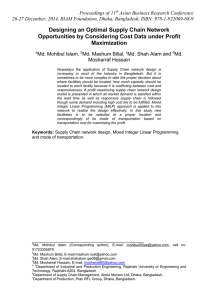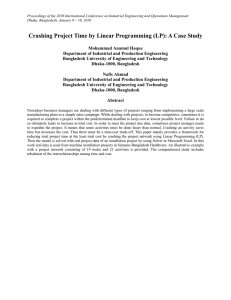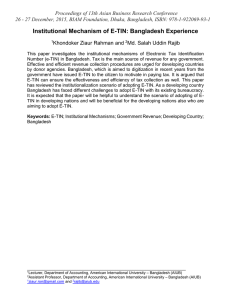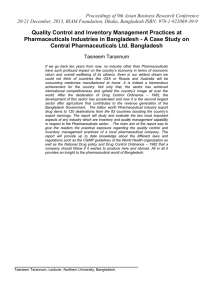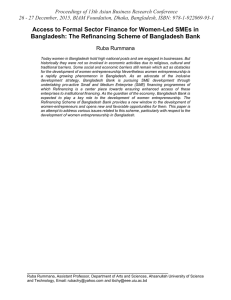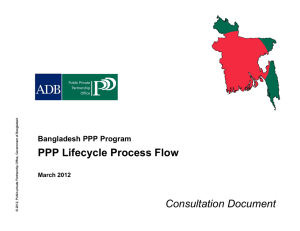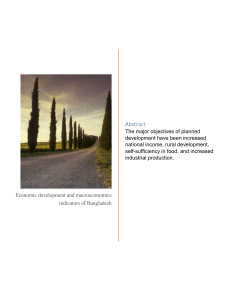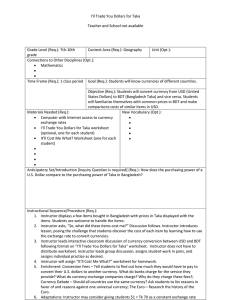Proceedings of 13th Asian Business Research Conference
advertisement
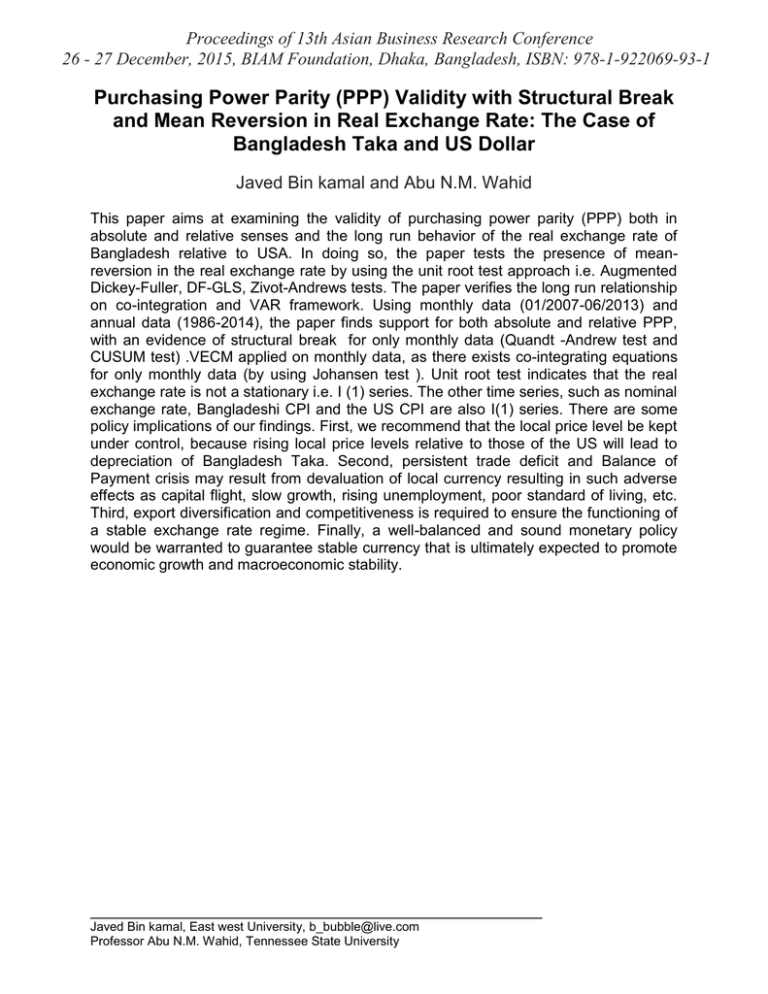
Proceedings of 13th Asian Business Research Conference 26 - 27 December, 2015, BIAM Foundation, Dhaka, Bangladesh, ISBN: 978-1-922069-93-1 Purchasing Power Parity (PPP) Validity with Structural Break and Mean Reversion in Real Exchange Rate: The Case of Bangladesh Taka and US Dollar Javed Bin kamal and Abu N.M. Wahid This paper aims at examining the validity of purchasing power parity (PPP) both in absolute and relative senses and the long run behavior of the real exchange rate of Bangladesh relative to USA. In doing so, the paper tests the presence of meanreversion in the real exchange rate by using the unit root test approach i.e. Augmented Dickey-Fuller, DF-GLS, Zivot-Andrews tests. The paper verifies the long run relationship on co-integration and VAR framework. Using monthly data (01/2007-06/2013) and annual data (1986-2014), the paper finds support for both absolute and relative PPP, with an evidence of structural break for only monthly data (Quandt -Andrew test and CUSUM test) .VECM applied on monthly data, as there exists co-integrating equations for only monthly data (by using Johansen test ). Unit root test indicates that the real exchange rate is not a stationary i.e. I (1) series. The other time series, such as nominal exchange rate, Bangladeshi CPI and the US CPI are also I(1) series. There are some policy implications of our findings. First, we recommend that the local price level be kept under control, because rising local price levels relative to those of the US will lead to depreciation of Bangladesh Taka. Second, persistent trade deficit and Balance of Payment crisis may result from devaluation of local currency resulting in such adverse effects as capital flight, slow growth, rising unemployment, poor standard of living, etc. Third, export diversification and competitiveness is required to ensure the functioning of a stable exchange rate regime. Finally, a well-balanced and sound monetary policy would be warranted to guarantee stable currency that is ultimately expected to promote economic growth and macroeconomic stability. ______________________________________________________ Javed Bin kamal, East west University, b_bubble@live.com Professor Abu N.M. Wahid, Tennessee State University

